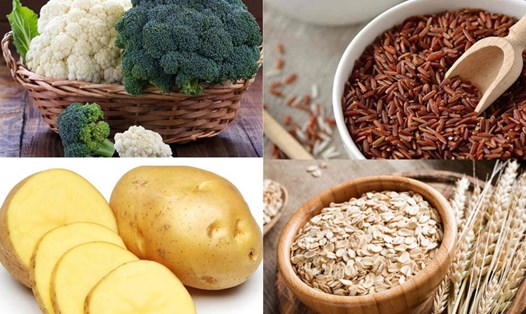Nutritional differences
In the world of rich cuisine, rice plays an important role in Asian meals. Usually, white rice is the most widely consumed, while red rice stands out for its high nutritional content.
White rice is carefully ground, remove the bran layer and germ, so it is low in fiber, vitamins and minerals. On average, 100g of cooked white rice provides about 130 calories, rich in carbohydrates but low in protein and almost no fat.
Meanwhile, red rice retains the bran layer rich in anthocyanins, natural antioxidants that help fight inflammation and support immunity. 100g of red rice provides 110 - 150 calories, more protein (3 - 4g) and is rich in fiber, iron, potassium, magnesium.
Red rice has a lower glycemic index than white rice, helping to control blood sugar and give you a feeling of fullness for longer, says Deepti Khatuja, a nutritionist at Fortis Healthcare (India).
Health benefits and how to use them
Studies published in the journal Biomolecules show that anthocyanins in red rice help reduce cholesterol, support the heart and prevent some chronic diseases. In addition, high fiber intake also helps improve digestion, prevent constipation and support weight management.
In contrast, although white rice is less nutritious, it still has the advantage of being easy to digest and providing quick energy. This is the reason why many athletes or new recovers still choose white rice as their main source of carbohydrates.
Nutritionist Sarah Brewer, lecturer at the University of Cambridge, shared: If you need a quick source of energy, white rice is still a useful choice. However, it should be combined with green vegetables and protein to balance nutrition".
Regarding the preparation method, red rice should be soaked at least one hour before cooking. The right water-rice ratio is 4:00 p.m., cook for about 20 minutes until the rice grains are tender. Red rice can be eaten with traditional salty dishes, used in salads or processed into rice.
White and red rice both have their own place in the meal. Healthy people who need quick energy can choose white rice, while people who want to control their weight, diabetes or increase nutrition should prioritize red rice.









